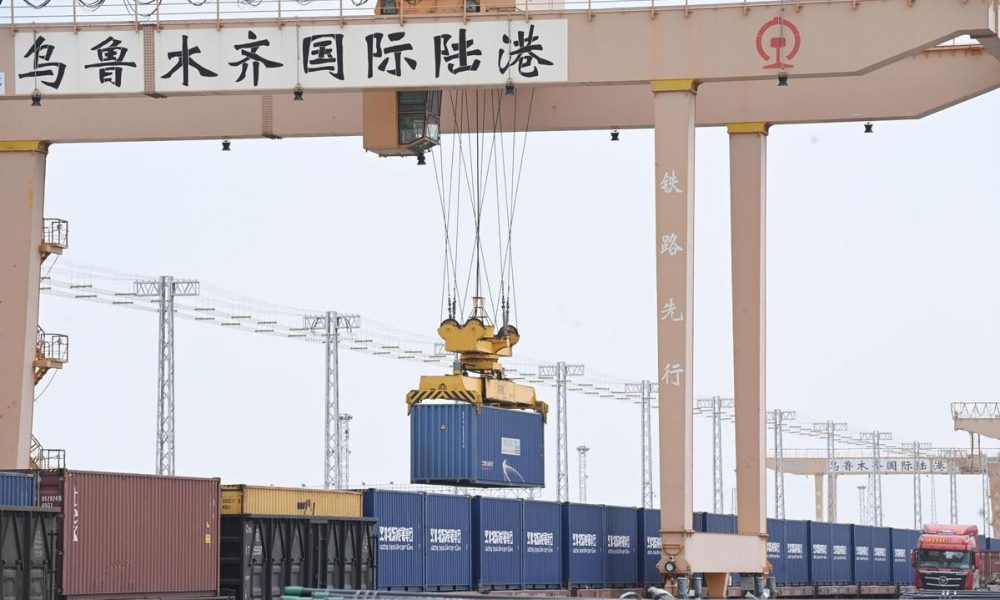Asia
Xinjiang breakthrough in China’s opening up

Prof. Xu Jianying, senior research-fellow of Institute of China’s Borderlands, CASS talked to Harici: “Both Chinese central government and the local government have made great efforts to open Xinjiang to the outside.”
Beijing aims for Xinjiang Uyghur Autonomous Region to become one of the important centers of China’s outward opening-up. As one of the prominent pillars of the Belt and Road Initiative, the commercial potential of Xinjiang, especially the southern border, has started to be evaluated.
On 1st November of last year, the Pilot Free Trade Zone (FTZ) was established, covering 179.66 square kilometers and comprising three sub-zones in Kashgar province, Urumqi and Horgos. In 2023, the new FTZ has shown good import and export performance, attracting the attention of the business community.
For example, on November 11, the Kashgar zone of the FTZ became operational and trade in the province grew rapidly in 2023. From January to November, imports and exports rose 80.8% year-on-year to 77.15 billion yuan ($10.87 billion), according to data from Kashgar Customs. The province contributed 24.1 percent to Xinjiang’s total foreign trade. Kashgar also has trade links with 128 countries and regions, 90 percent of which are part of the Belt and Road Initiative. It could take up to five years for Xinjiang to officially become a free trade zone.
China is also building new highways that will strengthen the region’s links with Central Asia. One of these projects is the Tianshan Shengli tunnel, the longest road tunnel in the world by today’s standards, which will cross the Tianshan Mountains and “open new routes” for exchanges between Xinjiang Uygur Autonomous Region and Central Asia, which experts say is an increasingly decisive area for foreign trade.
Scheduled to open in 2025, the tunnel will serve as a crucial transportation link between the southern and northern halves of the region, allowing Xinjiang to establish wider connections with Central Asia.

We spoke to Prof. Xu Jianying, senior research-fellow of Institute of China’s Borderlands, CASS about Beijing’s efforts to open Xinjiang to the outside world:
According to Prof. Xu Jianying, both the Chinese central government and the local government of Xinjiang have made great efforts to open Xinjiang to the outside world and have carried out sustained and long-term efforts. The first step was the opening of the port, Prof. Xu said, noting that Xinjiang has gradually opened many ports and has 17 ports open to the outside world so far. He also said that Xinjiang has ports with six neighboring countries other than India and Afghanistan, “For example, there is the famous Hongqirapu Port with Pakistan. Among the 17 ports opened, there are 15 land border ports and 2 air ports.”
Pointing out that the second step is to restart the economic zone, Prof. Xu said, “In 2010, two economic development zones were established in Xinjiang, one is Khorgos Economic Development Zone and the other is Kashi Economic Development Zone. These two zones are also important bases for Xinjiang to open up to the outside world.”
Stating that the third step is the establishment of a free trade zone, Prof. Xu said, “The Chinese government announced that a free trade zone will be built in Xinjiang covering three cities, Urumqi, Kashi and Khorgos. This is an important policy that shows the further development of Xinjiang’s opening to the outside world.”
In addition to the above-mentioned policies, the central government has made significant efforts in many other areas in Xinjiang, Prof. Xu pointed out, stressing that infrastructure construction in the region is developing rapidly. In terms of transportation construction, Xinjiang’s railways, highways, high-speed railways and aviation network are now well-developed and all connected with neighboring countries, he noted.
In addition, Prof. Xu reminded that the Belt and Road Initiative has six economic corridors, four of which pass through or are closely related to Xinjiang, including the China-Pakistan Economic Corridor, the China-Central Asia-West Asia Economic Corridor, the New Eurasia Corridor and the China-Mongolia-Russia Economic Corridor, showing that Xinjiang has become a very important frontier for China’s opening up.
Prof. Xu Jianying also noted that the central government regulates the Xinjiang local government’s foreign development and opening up in accordance with its own pace of development and opening up.